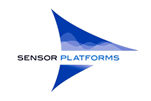Sensor Platforms is a venture-financed company located in Silicon Valley whose FreeMotion™ Library makes sensor fusion and user context awareness available to better enable mobile applications.
Sensor Platforms’ Technology and Market Opportunities
Inexpensive sensors coupled with sophisticated algorithms and software have made it possible for mobile electronic devices to become aware of their environment and movements. However, raw sensor data are meaningless to most mobile applications without a software library to interpret and convert the sensor measurements of the physical environment into information useable by the consumer.
Software in a sensor library now enables new applications, including activity-based and location-based services on mobile devices. These applications offer enriched user experiences and the ability to react to the user’s environment and situation, automatically offering appropriate assistance.
FreeMotion™ Library
Sensor Platforms’ FreeMotion Library provides the sophisticated intelligence needed to combine and process data from sensors (such as accelerometers, barometers, gyroscopes and magnetometers) on mobile devices, and interpret that data into contextual information meaningful to application developers.
Creating such a library requires the confluence of different areas of technical expertise, including understanding of control systems, mobile architecture, human motion kinematics, machine learning, sensor device physics, real-time systems, and signal processing. Sensor Platforms then combines those disciplines with its proprietary application-specific heuristics to produce easy-to-use systems that offer sustainable advantages in their various markets.
The FreeMotion Library works with Android and Windows 8 operating systems, and can also be embedded in microcontrollers and/or smart sensors.
Sensor Fusion and Context Awareness
The foundation of the FreeMotion Library is “sensor fusion,” which is an algorithmic technique of combining the outputs from two or more sensors recording a common event, so that the fused result better captures the event than any single constituent input. Its primary objective is to tease out a clean signal, e.g., an event or a motion, from the noises generated by the sensors, the mobile device, and the environment.
Sensor Platforms’ sensor fusion combines active sensor power management with best of class ability to mitigate magnetic anomalies.
But while sensor fusion in the FreeMotion Library allows applications to get more reliable information from sensors, it is just a starting point.
The second advantage applications gain from the FreeMotion Library is “context awareness,” which involves another layer of sophisticated algorithms on top of sensor fusion that interprets sensor data to infer higher-level information. These algorithms distill a context (e.g., “the user is walking”) into a series of characteristic features in sensor data. The presence of these and other features in recorded sensor data inform the context detection algorithm if the “walking” context is valid. Because different people walk differently, robust context detection must be abstracted over a representative population of users and over different environments, e.g. walking on a treadmill, walking upstairs, walking on a train, etc.
Low Power Architecture for Context Detection
Power on mobile devices is always a scarce resource. Not only does the context aware framework preserve battery life, it actually contributes to prolonging battery life by allowing more aggressive system power management. An intelligent resource manager collects and aggregates the required data from sensors, which data are then configured to evoke the lowest power combination, delivering the requested information while optimizing CPU and memory resources.
Engineering Efficiency for Adopters
The library is architected so that it can run on a single processor or be distributed among a processor, a sensor hub and/or intelligent sensors. Sensor Platforms can help mobile system and platform developers customize the FreeMotion Library to their specific system implementation.
The library also allows device OEMs to purchase their sensors from multiple alternate suppliers, allowing OEMs to take a “best of breed” approach, without affecting user experience or jeopardizing functionality. Some sensor vendors offer proprietary libraries that lock their customers into their products only. The FreeMotion Library supports sensors from all major suppliers and delivers superior results.
Simple-to-Use API to Tie Everything Together
Sensor Platforms presents the results of sensor fusion and user contexts in a simple-to-use applications programming interface (API). The API includes all the standard sensor functions provided by Android and Windows 8 so that applications written for these operating systems may transparently benefit from the FreeMotion Library so long as it is integrated into the underlying system.
FreeMotion also extends the stock API offered by Android and Windows 8 so that application developers can ignore the particular configurations and physics needed to track a motion or detect a context. The API allows the FreeMotion Library to handle the necessary device configurations, signal filtering and kinematics transformations automatically so that application developers only need to focus on the way in which the contexts can improve their applications.
Enabled by such context awareness, mobile devices will move us even closer to the time when our devices support our lives, rather than the other way around. And we will see a new generation of applications and systems that will improve people’s lives without intruding on their activities.
